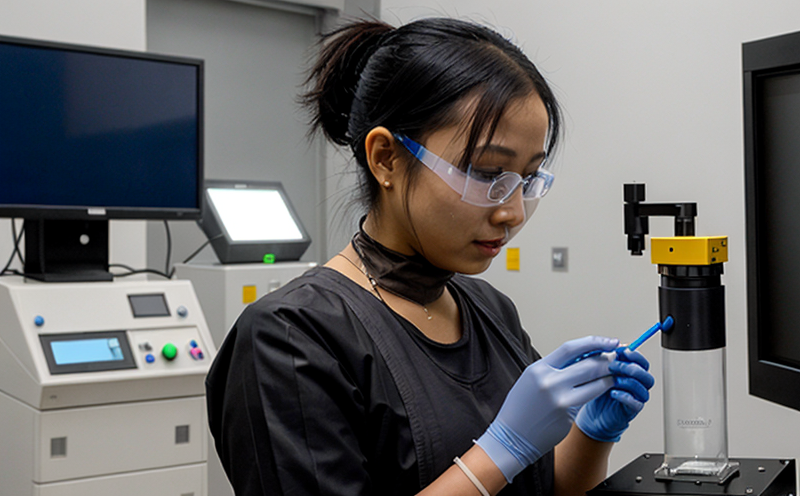ISO 16000 34 Airborne Nanoparticle Measurement in Indoor Environments
The ISO 16000-34 standard provides a comprehensive framework for the measurement of airborne nanoparticles within indoor environments. This method is particularly critical for understanding and managing potential health risks associated with nanomaterials exposure, which can vary widely depending on the specific types of nanoparticles present.
The standard specifies procedures for collecting air samples using cascade impactors followed by analysis via scanning electron microscopy (SEM) or transmission electron microscopy (TEM). The protocol ensures accurate quantification of nanoparticle size distributions and concentrations under controlled conditions. This approach is essential for assessing compliance with occupational safety regulations and ensuring workplace safety.
The measurement technique described in ISO 16000-34 allows for the detection of nanoparticles as small as 5 nanometers, making it suitable for evaluating various types of engineered nanoparticles commonly found in industrial settings such as manufacturing plants or research laboratories. By providing precise data on nanoparticle concentrations and size distributions, this method supports informed decision-making regarding control strategies and mitigation measures.
Key considerations when implementing ISO 16000-34 include selecting appropriate sampling locations based on expected particle levels, ensuring proper sample collection protocols are followed to avoid contamination or loss of particles during transport, and utilizing high-quality analytical equipment capable of detecting ultrafine particles. Proper training for personnel involved in conducting these measurements is also crucial to ensure consistent results across different laboratories.
In summary, adhering to the ISO 16000-34 standard enables organizations to effectively monitor and manage potential health hazards posed by airborne nanoparticles in indoor environments. This information can guide improvements in workplace safety practices while complying with relevant international standards and regulations.
Why It Matters
The measurement of airborne nanoparticles as per ISO 16000-34 is vital for several reasons:
It helps identify potential sources of nanoparticle emissions in indoor environments.
This information supports the development of effective control strategies to minimize worker exposure.
The data collected can inform regulatory compliance efforts and ensure adherence to occupational safety standards.
It provides valuable insights into the behavior of nanoparticles under various environmental conditions, which is crucial for assessing their toxicity potential.
By understanding nanoparticle characteristics such as size distribution, concentration levels, and dispersion patterns, organizations can take proactive steps to protect workers' health and safety. This knowledge also facilitates ongoing improvements in product design and manufacturing processes where nanomaterials are used.
Benefits
Precise quantification of nanoparticle sizes and concentrations helps in identifying hazardous materials early on.
The ability to detect ultrafine particles allows for more accurate risk assessments.
Data obtained from ISO 16000-34 supports evidence-based decisions about necessary protective measures.
Compliance with international standards enhances an organization's reputation and credibility in the market.
In addition to these direct benefits, implementing ISO 16000-34 also contributes positively to corporate social responsibility initiatives by demonstrating a commitment to worker safety and environmental stewardship.
Use Cases and Application Examples
| Industry Sector | Application Scenario | Purpose |
|---|---|---|
| Manufacturing | Monitoring emissions from powder processing equipment. | To ensure compliance with local regulations regarding nanoparticle concentrations in the workplace. |
| Research & Development | Evaluating new materials' safety profiles during development stages. | Aiding researchers in determining optimal conditions for handling novel nanomaterials safely. |
| Healthcare Facilities | Assessing potential airborne nanoparticle risks to patients and staff. | Promoting safer environments by identifying high-risk areas requiring enhanced ventilation systems or other interventions. |
These examples illustrate how ISO 16000-34 plays a crucial role across multiple industries, ensuring that proper precautions are taken to mitigate any adverse effects of nanoparticle exposure. Regular monitoring using this standard ensures continuous improvement in practices related to nanotechnology applications.





